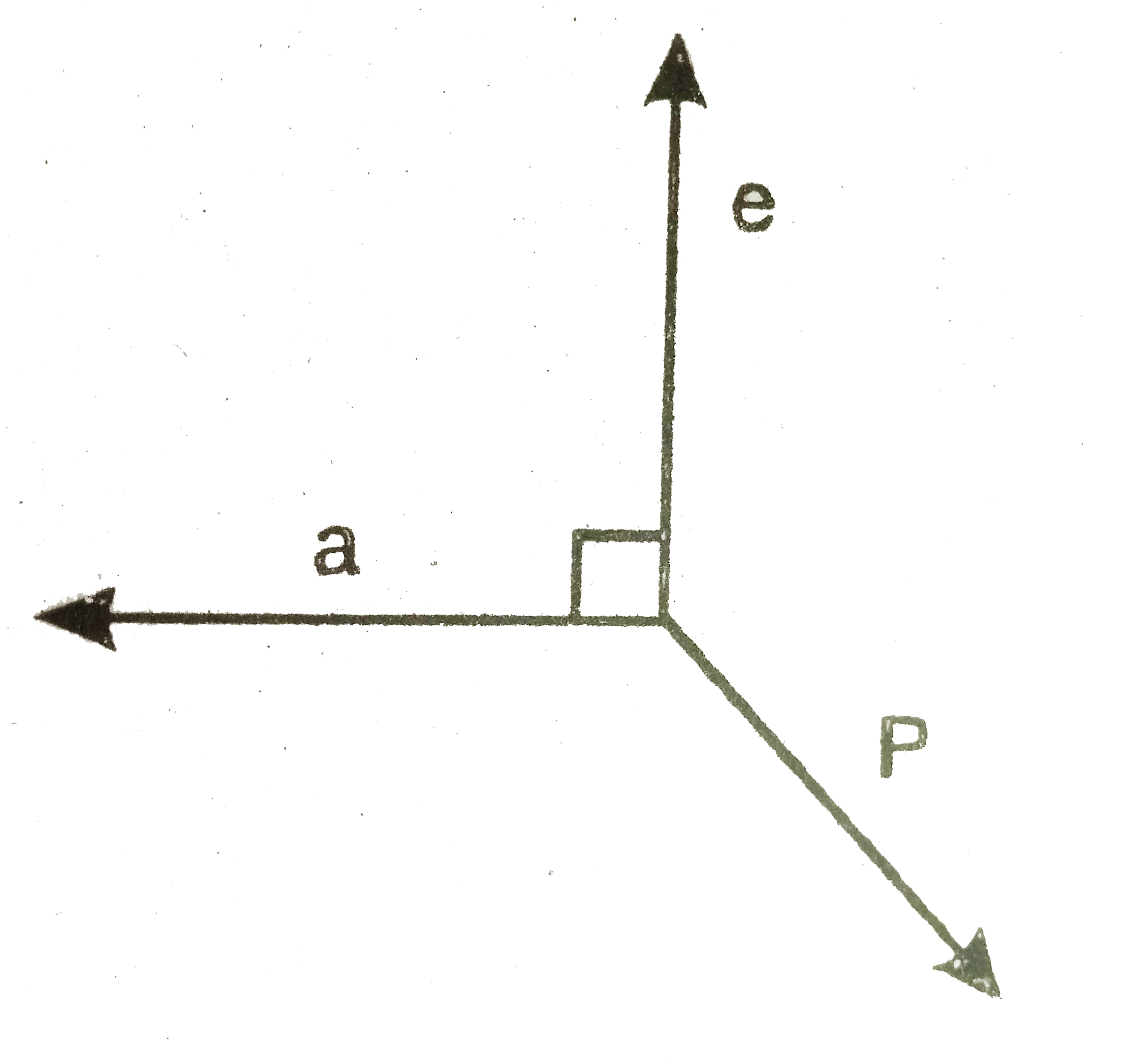A neutron initially at rest, decays into a proton, an electron and an antineutrino. The ejected electron has a momentum of 1.4×10−26 kg.m/s nd the antineutrino 6.4×1027 kgm/s. Find the recoil speed of the proton a. if the electron and the antineutrino are ejected along the same directioin and b. if they are ejected along perpendicular directions. Mass of the proton 1.67×10−27kg.
Mass of proton =1.67×10−27kg
LetVP be the velocity of proton. Given, moment of electron
=1.4×10−26kgmsec
and momentum of antineutrino
=6.4×10−27kgmsec

a. The electron and the antineutrino are ejected in the same direction.
As the total momentum is conserved the proton shoud be ejected in the opposite direction.
1.67×10−27×VP
=1.4×10−26+6.4×10−27
=20.4×10−27
∴VP=(20.41.67)
=12.2msec in the opposite direction.
b. the electron and ntineutrino are ejected perpendicular to each other.
Total momentum of electron and antineutrino
=√(14)2+(6.4)2×10−27kgms
→VP=15.4×10−27kg−msec1.67×10−27kg
∴VP=9.2ms
Topper's Solved these Questions
- CENTRE OF MASS, LINEAR MOMENTUM, COLLISIONBOOK - HC VERMACHAPTER - CENTRE OF MASS, LINEAR MOMENTUM, COLLISIONEXERCISE - Objective 2
11 Videos
- CALORIMETRYBOOK - HC VERMACHAPTER - CALORIMETRYEXERCISE - Exercises
18 Videos
- CIRCULAR MOTIONBOOK - HC VERMACHAPTER - CIRCULAR MOTIONEXERCISE - Exercises
30 Videos
Similar Questions
A neutron intially at rest, decays into a proton, an electron and an antineutrio. The ejected electron has a momentum of p1=1.4×10−28 kg-m/s and the antineutrino p2=6.5×10–27 kg-m/s. Find the recoil speed of the proton
if the electron and the antineutrino are ejected along the the same direection.
View SolutionHow many protons weight 5kg? The mass of a proton is 1.67×10−27kg.
View Solution
Knowledge Check
A radioactive nucleus initially at rest decays by emitting an electron and neutron at right angle to one another. The momentum of neutron is 3.2×10−24kgm/s and the momentum of neutron is 6.4×10−24kgm/sec . The direction of the recoiling nucleus with that of the electron motion is:
Aπ−tan−1(2)Btan−1(2)Ctan−1(0.5)Dπ2+tan−1(2)
The radius of dees in a cyclotron is 1.9 m and the magnetic field applied on the cyclotron is 0.8 T. Calculate the energy gained by an emergent proton in cyclotron in keV. Mass of proton is 1.67×10−27 kg.
View SolutionThe mass of an electron is 9.11x10−31 kg, that of a proton is 1.67x10−27 kg. Find the ratio Fe/Fg of the electric force and the gravitational force exerted by the proton on the electron.-
View SolutionA proton of mass 1.66×10−27kg is moving with kinetic energy 5×10−17J .What is the wavelength of proton ?
View SolutionFind the de Broglie wavelength of 2 MeV proton. Mass of proton =1.64×10−27kg,h=6.625×10−34Js
View SolutionCalculate the accelerating potential that must be imparted to a photon to give it an effective wavelength of 0.005 nm (mass of proton =1.67×10−27kg)
View SolutionCalculate the equivalent energy of electrons and proton at rest. Given that mass of electron =9.1×10−31kg and mass of proton =1.673×10−27kg.
View SolutionHow fast does a proton have to be moving with order to have the same de-Broglie wavelength as an electron that is moving with a speed of 5.5×106ms−1? Mass of proton=1.67×10−27kg.
View Solution
